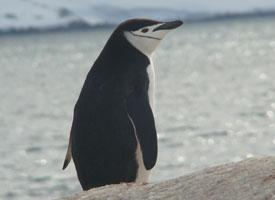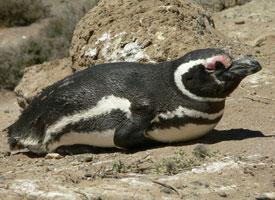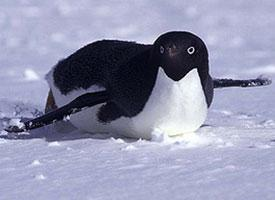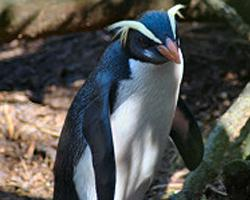
Váhy a míry
| Výška v kohoutku | 60 cm |
|---|---|
| Hmotnost | 3,7 kg |
Stav ohrožení
| Ohrožen |
Popis zvířete
The Fiordland penguin, scientifically known as Eudyptes pachyrhynchus, is a captivating species of crested penguin native to New Zealand, specifically to the Fiordland region and surrounding islands. This species is one of the least known and studied among penguins, largely due to its remote and inaccessible habitat. The Fiordland penguin is distinguished by several unique physical and behavioral characteristics that set it apart from other penguin species.Physical Description
The Fiordland penguin stands at about 60 cm (24 inches) tall and weighs around 3 to 6 kg (6.6 to 13.2 lbs), with males typically being larger and heavier than females. Its plumage is predominantly black on the dorsal side and white on the ventral side, a common counter-shaded pattern among penguins, which serves as camouflage from predators while swimming. The face is marked by a conspicuous yellow crest that extends from above the eyes to the back of the head, which becomes more prominent during the breeding season. Its bill is robust and reddish-brown, and the strong, webbed feet are pinkish above with black soles.
Habitat and Distribution
Fiordland penguins are endemic to the temperate rainforests and rugged coastlines of New Zealand's South Island's southwestern coast, particularly in the Fiordland National Park and Stewart Island/Rakiura. They are adapted to life both in the cold waters of the Southern Ocean and the dense, temperate rainforests where they nest and breed.
Behavior and Diet
Fiordland penguins are excellent swimmers, using their flippers and streamlined bodies to navigate the water in search of food. Their diet primarily consists of cephalopods, small fish, and crustaceans. They are known to dive deep, often reaching depths of over 100 meters (328 feet) to forage for food. On land, they are somewhat awkward, moving with a characteristic waddle, but they are also capable climbers, navigating steep cliffs and dense forests to reach their nesting sites.
Reproduction and Lifecycle
The breeding season for Fiordland penguins begins in June or July when they return to their nesting sites in the dense coastal forests and caves. They are monogamous, with pairs forming strong bonds and returning to the same nest year after year. The nests are built from twigs, grass, and leaves, concealed under dense vegetation or in crevices to protect them from predators and the elements. The female typically lays two eggs, but usually, only one chick survives due to the second egg being smaller and laid several days after the first. Both parents share the duties of incubating the eggs and feeding the chick until it fledges about 75 days later.
Conservation Status
The Fiordland penguin is classified as Vulnerable by the International Union for Conservation of Nature (IUCN), with an estimated population of fewer than 10,000 breeding pairs. The primary threats to their survival include habitat destruction, introduced predators such as dogs and stoats, and human disturbances. Efforts are being made to protect their habitats and mitigate threats, but their remote nesting sites and elusive nature make conservation challenging.
Conclusion
The Fiordland penguin is a unique and fascinating species, embodying the rugged and wild essence of New Zealand's landscapes. Despite their resilience and adaptability, they face significant threats that require ongoing conservation efforts to ensure their survival. As a symbol of the rich biodiversity and natural beauty of Fiordland, the protection of these penguins is crucial for preserving the ecological integrity of this unique region.
Mapa výskytu
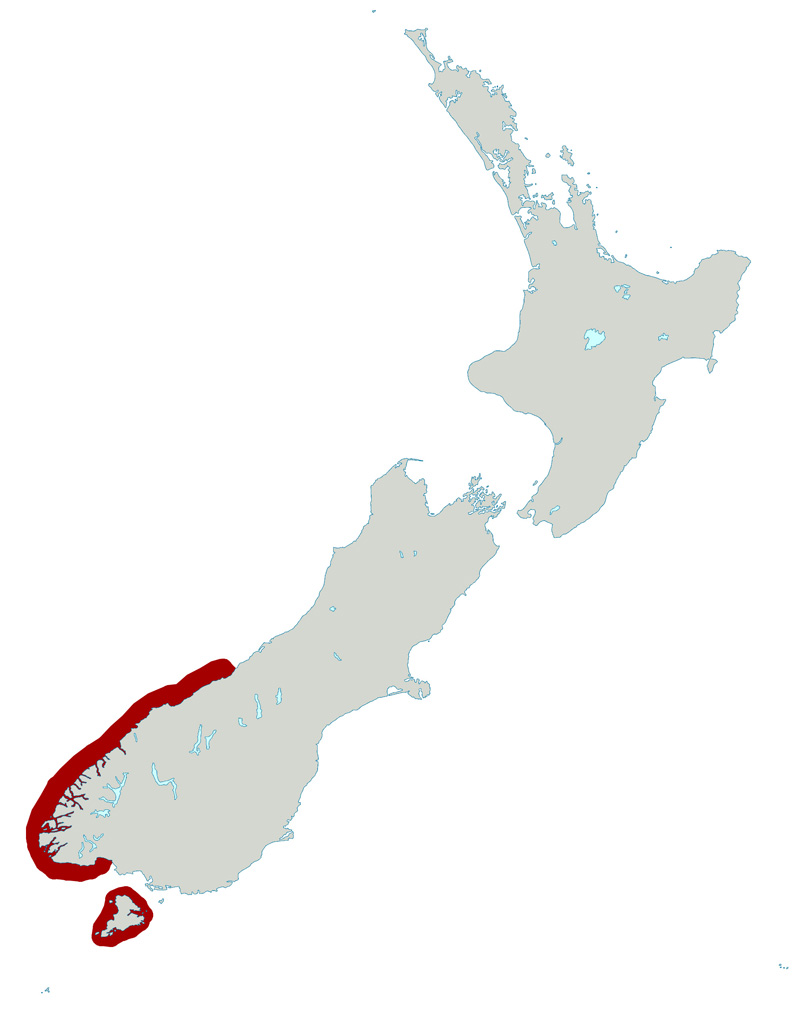
Podobná zvířata
Nové fotografie zvířat
Top 10 zvířat
- Chinese water dragon (Physignathus cocincinus)
- Galápagos tortoise (Geochelone nigra complex)
- Dolphin gull (Leucophaeus scoresbii)
- Japanese macaque (Macaca fuscata)
- Colombian red howler (Alouatta seniculus)
- Sea urchins (Echinoidea)
- Moustached guenon (Cercopithecus cephus)
- Diana monkey (Cercopithecus diana)
- Common reed warbler (Acrocephalus scirpaceus)
- Common house mosquito (Culex pipiens)
